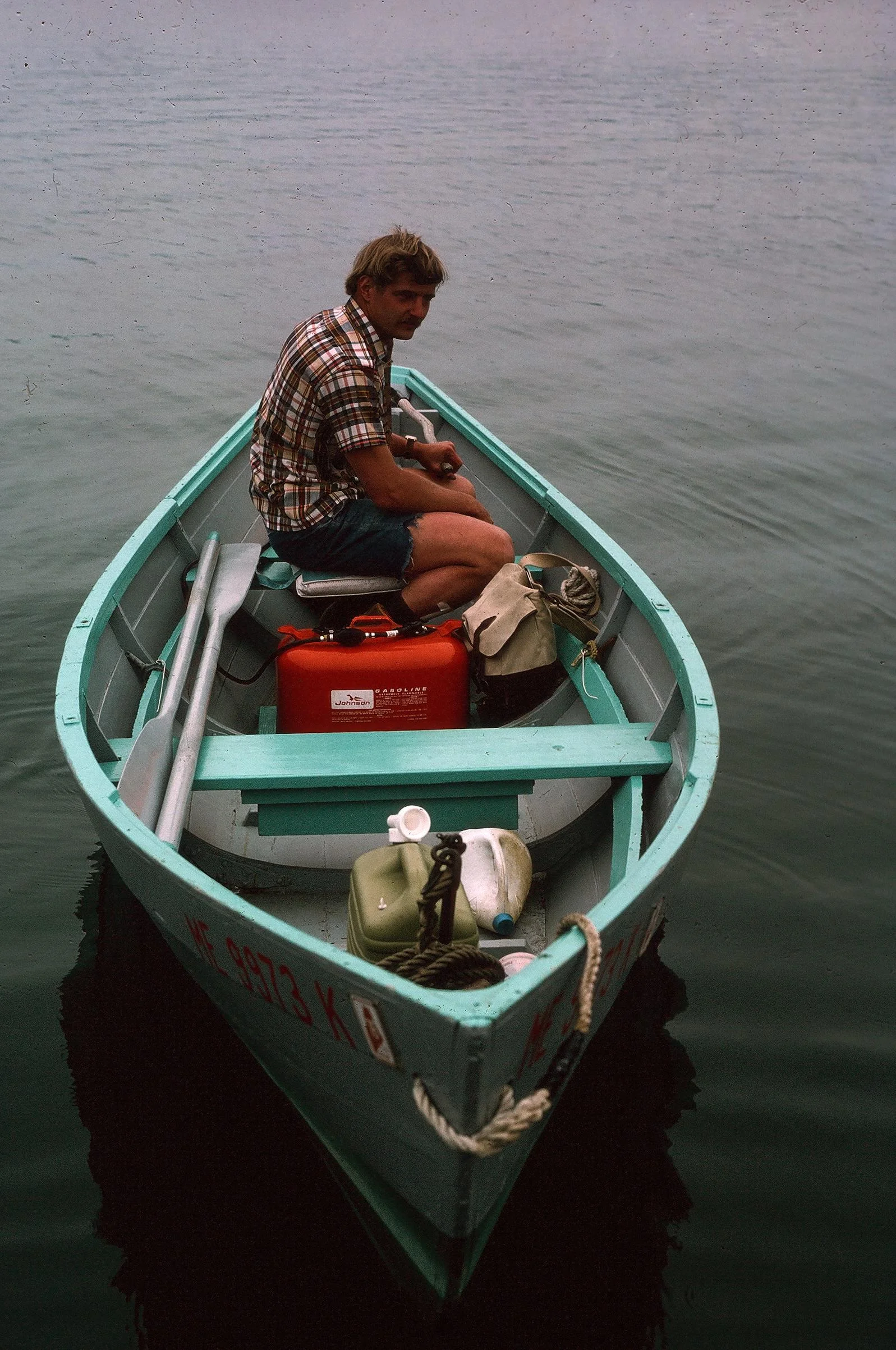Barnaby Porter started life as a kid with old family roots in coastal Maine, Calais and Waldoboro. Though many of his school years were spent in Massachusetts, his summer and winter vacations were spent in Maine. He entered the University of Maine’s School of Forestry in 1964 and earned his B.S. in Wildlife Biology.
After a stint in the U.S. Army as a medic, a short career as a grave digger and another as dock worker and truck driver in Boothbay Harbor, he eventually landed a job at the University of Maine’s Darling Marine Center where he was responsible for the monitoring of commercially important invertebrate populations in and around Montsweag Bay to determine the impact of the Maine Yankee Nuclear Power Plant. It was at this point in 1972 that Barnaby and his wife, Susan, settled on the Edgecomb shore of the Damariscotta River in the vicinity of Merry Island. For six or seven years he commuted to work at the Darling center in a 17-foot dory, and his love affair with the Damariscotta River began. That was 40 some years ago.
What followed in the years since included a concentrated study of the blue mussel with particular focus on growth, mortality and recruitment in the Damariscotta River, which led to, among other things, a close involvement with Ed Meyers’ pioneering aquaculture operation in Clarks Cove. After that, Barnaby managed Ocean Point Lobster Co., a lobster pound in East Boothbay.
Then, in a big career change, Barnaby acquired a sawmill and started a wood products business called Ax Wood Products and eventually relocated from Edgecomb to Walpole. He stumbled into a series of artistic creations made of old hollow trees and found materials that, once debuted in Tiffany’s windows in NYC, led him from the public TV show, Made in Maine, to exposure in magazines such as Fine Woodworking and DownEast, and various newspapers. In 1995, as “the artist” on Maine’s first International Trade Mission, Barnaby took a number of his pieces of “glorified firewood” to Japan. Governor King invited him to make a commemorative piece, a large sailing ship, to exhibit in the Blaine House. Since then, there have been exhibits in the Farnsworth Museum and elsewhere.
During those 20 years in the woodworking business, Barnaby wrote weekly newspaper columns for, first, the Waldoboro Weekly, then the Coastal Journal and the Lincoln County Weekly. Mostly essays under the title Observations, ranging from childhood reminiscences to nature observations to philosophy, he ended up reading many of them on MPBN’s Maine Things Considered. A good number of those pieces were reflections of his years working and meandering on the Damariscotta River and became the essence of his 2005 book, Twelve Miles from the Rest of the World: A Portrait of the Damariscotta River, a collaboration with photographer Al Trescot. Also in those years, Barnaby and Susan built their home at Crow Point on the river near Prentiss Island.
Most recently, for nearly 20 years, Barnaby partnered with Susan in ownership and the running of Damariscotta’s Maine Coast Book Shop & Café. He was intimately involved in resurrecting Lincoln Hall, which he and his wife shared with the Lincoln Theater. Additionally, he has also been on the building committee for the new Skidompha Library and was clerk of the works during its construction. Barnaby has served as a member of the Library’s Board of Directors and for the last several years has been on the steering committee to formulate Damariscotta’s new Comprehensive Plan. He is also currently involved with the many-faceted Waterfront Improvement Project.

